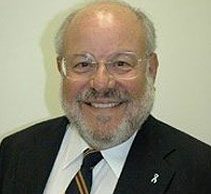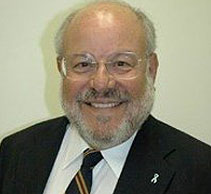SUFFOLK CLOSEUP : 1st CD Voters Have A Record Of Swinging Politically
 Thursday, March 28, 2024 at 10:08PM
Thursday, March 28, 2024 at 10:08PM SUFFOLK CLOSEUP
By Karl Grossman
 Primaries on June 25th will set who will run for the House of Representatives in Suffolk’s lst Congressional District. The district includes Smithtown, the northern half of Brookhaven, much of Huntington and the five East End towns.
Primaries on June 25th will set who will run for the House of Representatives in Suffolk’s lst Congressional District. The district includes Smithtown, the northern half of Brookhaven, much of Huntington and the five East End towns.
It’s a “swing” district, one that could go Democrat or Republican, unusual these days for a House district most of which are dominated by voters of one party due to politically manipulated reapportionment.
I’ve covered races in the lst C.D. since becoming a journalist in Suffolk in 1962 when Otis G. Pike held the seat. He typified the independence of district voters. When I started, my editor at the Babylon Town Leader explained that on the East End, town Democratic committees considered themselves “Wilsonian Democrats.” They “reject the New Deal” of Franklin D. Roosevelt, John A. Maher said, and were still on the political path of President Woodrow Wilson.
But Pike, from the East End, from Riverhead, saw himself as a “Stevensonian Democrat”—an admirer of liberal Adlai Stevenson. Yet, for nearly two decades he won over and over again in the lst C.D. before retiring from the House in 1979.
Pike was followed by William Carney, a Conservative Party member, a Suffolk County legislator from Hauppauge who got the Republican nod in the lst C.D. in a deal in 1978 by which the Conservative Party endorsed GOPer Perry Duryea of Montauk for governor that year.
Carney was defeated for re-election in 1986 largely because of his ardent support of the then under-construction Shoreham nuclear power plant. He then took a job as a lobbyist for the nuclear power industry. Still, although a staunch conservative, Carney had previously been re-elected three times in the lst C.D.
Yes, voters in the lst C.D. have a record of swinging politically.
The incumbent now in the lst C.D., in his first term, is Republican Nick LaLota of Amityville, a former chief of staff of the Suffolk County Legislature and an ex-commissioner of the Suffolk County Board of Elections.
George Santos has announced he will take on LaLota in the June GOP primary. He came to the presidential “State of the Union” address this month and at the same time proclaimed on X that he was running against LaLota to be the Republican candidate in the lst C.D. The preposterous Santos was expelled from the House by an overwhelming vote of its members last year following an investigation by its Ethics Committee which found he broke federal laws, stole from his campaign and delivered a “constant series of lies” to voters and donors. He faces trial in U.S. District Court in Central Islip in September on a 23 felony count indictment. He said he will run against LaLota because LaLota was among the “empty suits” in the House kicking him out.
LaLota responded saying that “to hold a pathological liar who stole an election accountable, I led the charge to expel George Santos. If finishing the job requires beating him in a primary, count me in.”
However, to be eligible to run in the primary to be the GOP candidate in the lst C.D., some 1,250 signatures of enrolled Republicans in it are required. It’s very doubtful that Santos, who had represented the 3rd C.D. then made up of Nassau County and part of Queens, and with his last known address in Queens, can collect that number of signatures.
Santos has just announced, again on X, that he won’t seek the GOP line to run in the primary but will run in the general election for the lst C.D. position as an independent. However, to get on the general election ballot as an independent would, according to the Suffolk County Board of Elections, require the signatures of 3,500 voters in the lst C.D. — yet another Santos fantasy.
On the Democratic side, primary rivals this year for the lst C.D. position are John Avlon of Sag Harbor, an author and CNN analyst and anchor who left CNN to run for it, and Nancy Goroff, a retired Stony Brook University chemistry professor who lives in Stony Brook.
Avlon has been endorsed by Democratic figures including State Assemblyman Fred W. Thiele, Jr. of Sag Harbor; Southampton Councilman Tommy John Schiavoni; Suffolk Legislator Ann Welker; and former Southampton Town Supervisor Jay Schneiderman, who all addressed well over 100 people at a recent kick-off in Sag Harbor of his campaign. Southampton Town Democratic Chair Gordon Herr and East Hampton Town Democratic Chair Anna Skrenton, whose town committees have endorsed Avlon, spoke as well.
Thiele declared that this is “the most important election in our lifetime.” Avlon, he said, “listens, he communicates, he understands how politics works and he can win.”
Avlon said this year’s election is “about freedom and democracy in a fundamental way like we’ve never faced.” He described former President Donald Trump who “praises dictators at every stop” as a threat to democracy. Earlier, Avlon and Goroff debated in East Hampton with both scoring LaLota and Trump.
Goroff has experience running in the lst C.D. having been the Democratic candidate in 2020 against then incumbent Representative Lee Zeldin, a Shirley Republican, but losing by 10 percent.
LaLota has affirmed his wanting Trump to regain the presidency saying on X that “as a Navy veteran…I understand America needs a Commander-in-Chief who will keep us safe.”
Will LaLota’s advocacy of Trump help or hurt him? Voters in the lst C.D. in 2016 balloted 54 percent for Republican Trump and 42 percent for Democrat Hillary Clinton for president, and in 2020 some 51 percent went for Trump and 47 percent for Democrat Joe Biden. Yet in 2012 they went 50 percent for Democrat Barack Obama and 49 percent for Republican Mitt Romney, and in 2008 52 percent for Obama and 48 percent for Republican John McCain. In 2004 both Republican George W. Bush and Democrat John Kerry received 49 percent. And in 2000 some 52 percent of voters balloted for Democrat Al Gore and 44 percent for Bush in the independent-minded lst C.D.
 Karl Grossman is a veteran investigative reporter and columnist, the winner of numerous awards for his work and a member of the L.I. Journalism Hall of Fame. He is a professor of journalism at SUNY/College at Old Westbury and the author of six books.
Karl Grossman is a veteran investigative reporter and columnist, the winner of numerous awards for his work and a member of the L.I. Journalism Hall of Fame. He is a professor of journalism at SUNY/College at Old Westbury and the author of six books.
 . |
. |  Post a Comment |
Post a Comment |  1st CD,
1st CD,  George Santos,
George Santos,  John Avlon,
John Avlon,  Nancy Goroff,
Nancy Goroff,  Nick LaLota
Nick LaLota 










